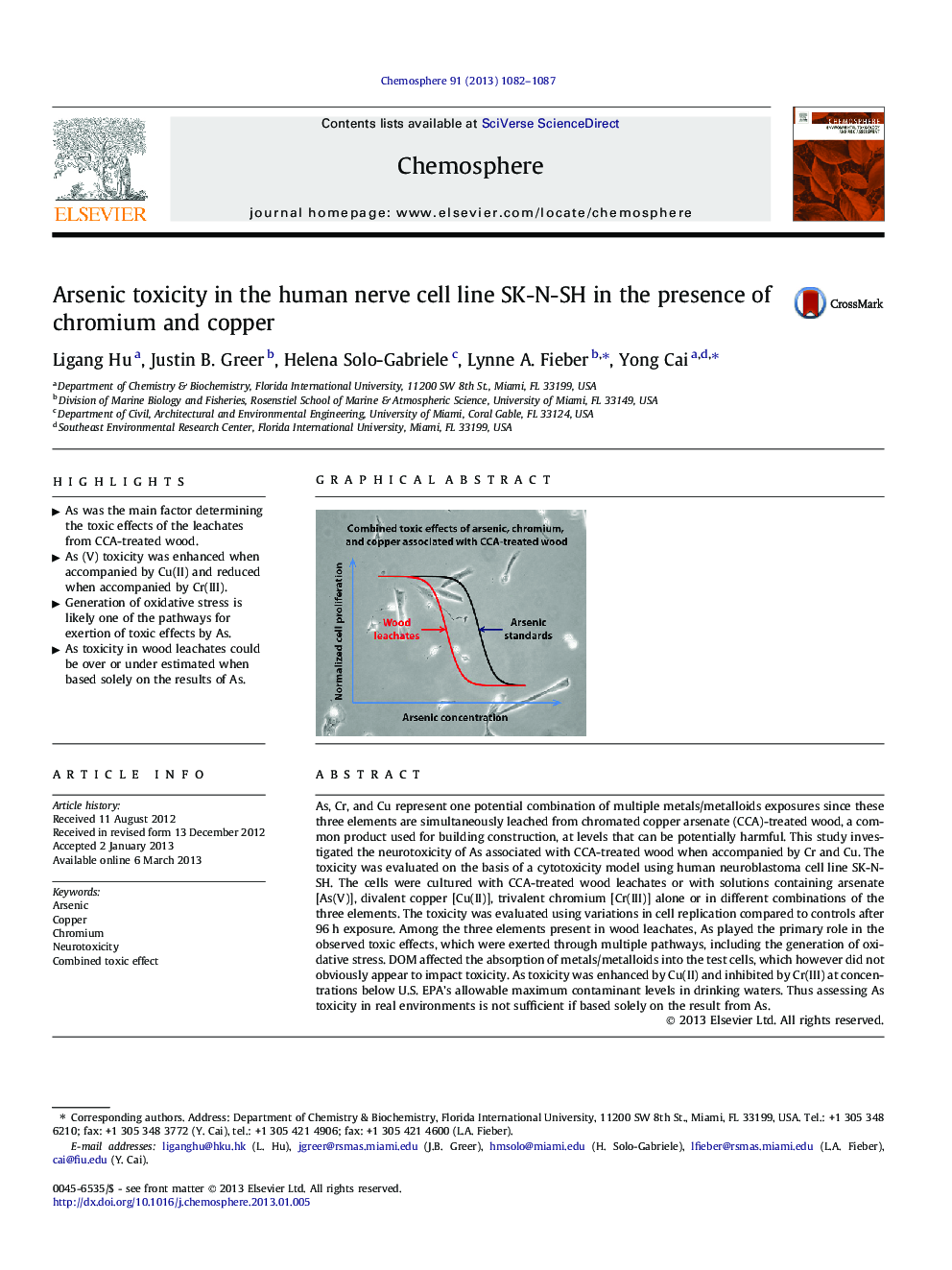| Article ID | Journal | Published Year | Pages | File Type |
|---|---|---|---|---|
| 4409522 | Chemosphere | 2013 | 6 Pages |
As, Cr, and Cu represent one potential combination of multiple metals/metalloids exposures since these three elements are simultaneously leached from chromated copper arsenate (CCA)-treated wood, a common product used for building construction, at levels that can be potentially harmful. This study investigated the neurotoxicity of As associated with CCA-treated wood when accompanied by Cr and Cu. The toxicity was evaluated on the basis of a cytotoxicity model using human neuroblastoma cell line SK-N-SH. The cells were cultured with CCA-treated wood leachates or with solutions containing arsenate [As(V)], divalent copper [Cu(II)], trivalent chromium [Cr(III)] alone or in different combinations of the three elements. The toxicity was evaluated using variations in cell replication compared to controls after 96 h exposure. Among the three elements present in wood leachates, As played the primary role in the observed toxic effects, which were exerted through multiple pathways, including the generation of oxidative stress. DOM affected the absorption of metals/metalloids into the test cells, which however did not obviously appear to impact toxicity. As toxicity was enhanced by Cu(II) and inhibited by Cr(III) at concentrations below U.S. EPA’s allowable maximum contaminant levels in drinking waters. Thus assessing As toxicity in real environments is not sufficient if based solely on the result from As.
Graphical abstractFigure optionsDownload full-size imageDownload as PowerPoint slideHighlights► As was the main factor determining the toxic effects of the leachates from CCA-treated wood. ► As (V) toxicity was enhanced when accompanied by Cu(II) and reduced when accompanied by Cr(III). ► Generation of oxidative stress is likely one of the pathways for exertion of toxic effects by As. ► As toxicity in wood leachates could be over or under estimated when based solely on the results of As.
